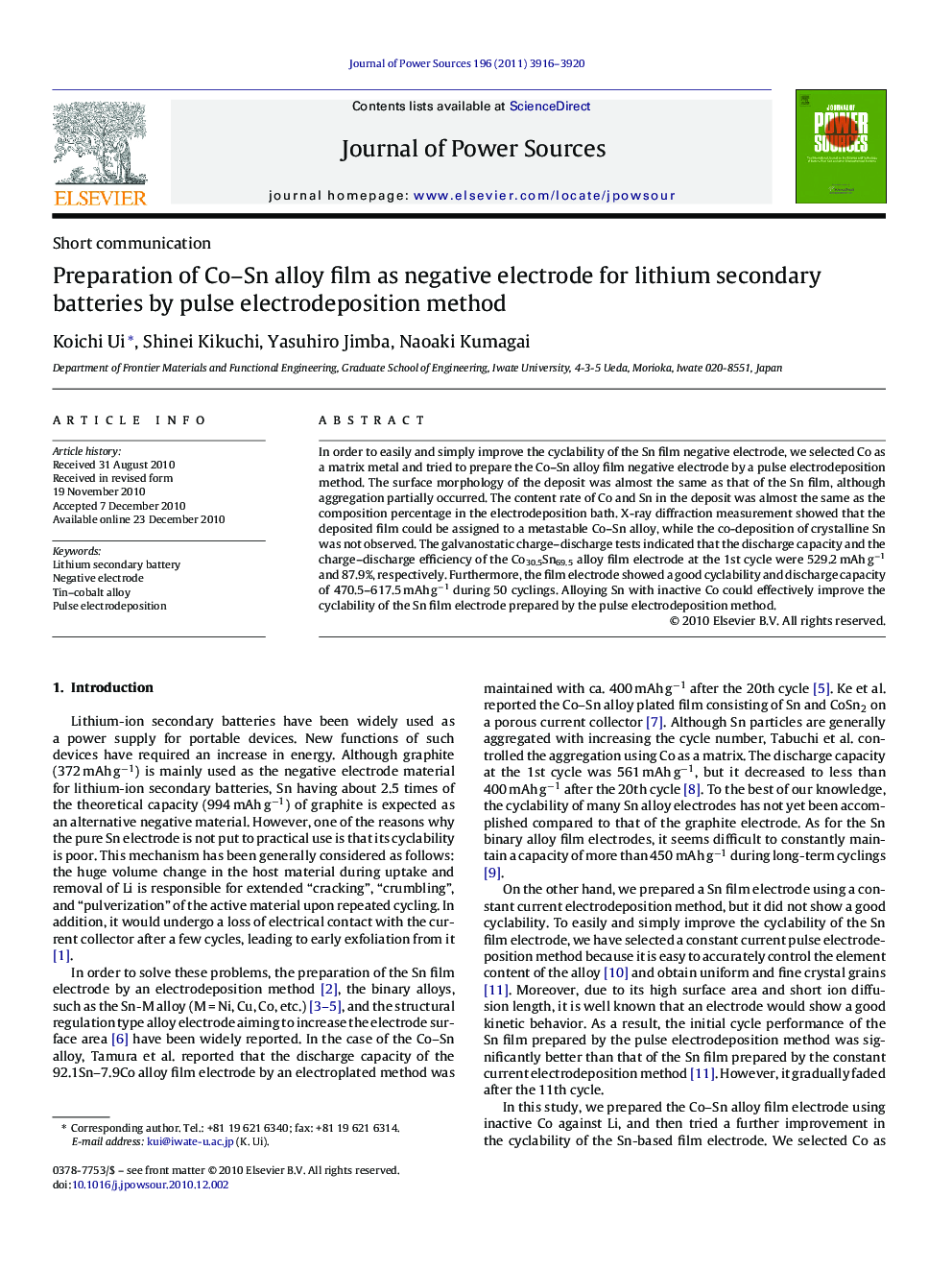| Article ID | Journal | Published Year | Pages | File Type |
|---|---|---|---|---|
| 1289263 | Journal of Power Sources | 2011 | 5 Pages |
In order to easily and simply improve the cyclability of the Sn film negative electrode, we selected Co as a matrix metal and tried to prepare the Co–Sn alloy film negative electrode by a pulse electrodeposition method. The surface morphology of the deposit was almost the same as that of the Sn film, although aggregation partially occurred. The content rate of Co and Sn in the deposit was almost the same as the composition percentage in the electrodeposition bath. X-ray diffraction measurement showed that the deposited film could be assigned to a metastable Co–Sn alloy, while the co-deposition of crystalline Sn was not observed. The galvanostatic charge–discharge tests indicated that the discharge capacity and the charge–discharge efficiency of the Co30.5Sn69.5 alloy film electrode at the 1st cycle were 529.2 mAh g−1 and 87.9%, respectively. Furthermore, the film electrode showed a good cyclability and discharge capacity of 470.5–617.5 mAh g−1 during 50 cyclings. Alloying Sn with inactive Co could effectively improve the cyclability of the Sn film electrode prepared by the pulse electrodeposition method.
Graphical abstractFigure optionsDownload full-size imageDownload as PowerPoint slideResearch highlights▶ The cycle performance of the Sn film electrode is shown Fig. (a). ▶ The cycle performance of the Co–Sn alloy film electrode is shown Fig. (b). ▶ The Sn film electrode showed a gradual capacity fade during 10–20 cyclings. ▶ The cyclability of the Co–Sn alloy film electrode is better than that of the Sn film electrode. ▶ Alloying Sn with Co dramatically improved the cyclabilty of the Sn based electrode.
